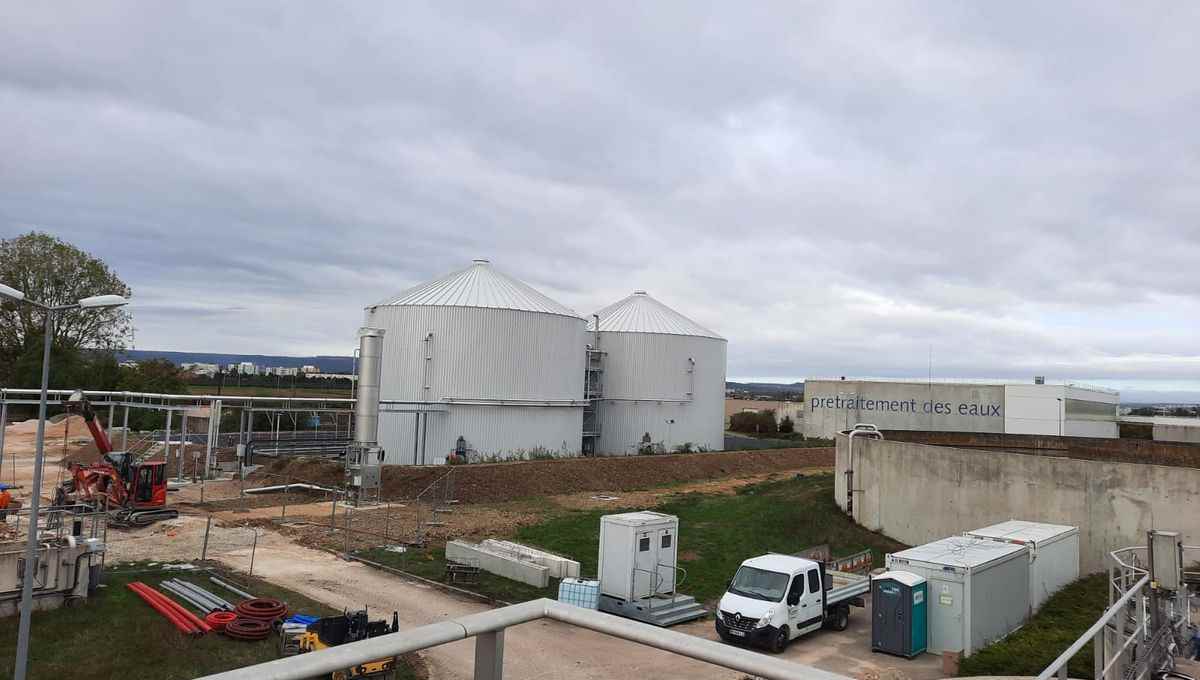The agglomeration of Dijon will soon produce its own gas! The metropolis is in the process of completing the construction of a methanizer. It takes place on the site of the wastewater treatment plant in Longvic. A biogas plant, in short, is a vast tank used to produce gas from fermentation of waste, in this case sewage sludge will be used. This tool will come into operation “early 2023” indicates the Metropolis.
The idea germinated in 2019, long before the war in Ukraine and tension in the energy market. It is a question of recovering the mud brought by our sewers. We are going to take 26,000 tons of it a year, and we are going to enrich it with about 7,000 tons of fats recovered from agro-food companies in Côte-d’Or. This mixture will first be heated, which rids it of all impurities, then it is put to ferment in the methaniser.
© Radio France
–
Olivier Estran
This biogas plant is two large metal silos. We brew, we let it rest, and we recover at the end of the pipe the equivalent of 10 gigawatts/hour of gas for one year.
© Radio France
–
Olivier Estran
© Radio France
–
Olivier Estran
© Radio France
–
Olivier Estran
Few heated accommodations, but a big recipe
On paper the volume seems substantial, but it will only represent 5% of the gas consumption of the metropolis. In other words enough to heat 3,500 homes (i.e. the equivalent of 5,000 people). This operation remains beneficial in more ways than one: before arriving here, this gas is first resold to GRDF and this will bring in one million euros a year to the community.
© Radio France
–
Olivier Estran
© Radio France
–
Olivier Estran
Less sludge to spread.
And then, we transform waste into energy. With this methanation, the Métropole will halve the volume of sewage sludge that is spread as fertilizer on the fields. As a result, we will use half as many trucks to evacuate them. “In addition, they will be of better quality” stresses François rollin, director of the Water Agency for Bourgogne Franche-Comté. “Anaerobic digestion makes it possible to sanitize the sludge. this allows, for example, to get rid of traces of Covid19. It is therefore an asset, an asset for the agricultural production that comes behind it.” Finally, all this must be done without bad smells, because everything remains airtight in this treatment plant.
Is methanization the right solution to reduce our energy dependence? We ask the question this Friday, October 6 at 8:15 a.m. at Antoine Hoareau, vice-president of the Métropole in charge of this dossier. This is the guest of the “6/9” of France Bleu Bourgogne
